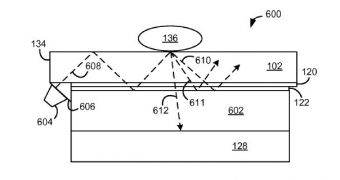Little is known officially about Microsoft’s mobile vision, but the rumor mill is pointing at all kinds of changes for Redmond’s smartphone business, including the demise of the Lumia brand and the arrival of a super flagship Surface Phone.
As far as this new model is concerned, it’s believed that Microsoft wants to equip it with the most advanced hardware to date, including the latest CPUs, plus new tech that would provide it a substantial advantage in the fight against iPhones and Android flagships.
One such tech could be an on-screen fingerprint screen, as a recent patent belonging to the firm seems to be hinting that such a feature is currently being worked on behind closed doors at Microsoft.
While patents don’t necessarily make it into production, they do help us get a glimpse into companies’ visions regarding future products and, as far as the Surface Phone is concerned, an on-screen fingerprint scanner actually makes sense.
Similar tech coming on future iPhones
Microsoft has invested a lot in biometrics and Windows Hello is living proof, but with the debut of the Surface Phone, it could go one step further and bet big on fingerprints. While fingerprint scanners are typically integrated into home buttons, as is the case with the majority of Android and iOS devices, Microsoft might be pondering a different strategy and build them directly into the screen.
Coincidentally or not, this is a technology that Apple is also believed to be interested in, as people with knowledge of the matter previously hinted that the 2017 or the 2018 iPhone could come with a completely new design that would have all front-facing parts, including the fingerprint scanner, integrated into the display.
For the moment, however, it’s way too soon to tell if Microsoft is indeed ready to bring an on-screen fingerprint reader on mobile phones, pretty much because we don’t even know if the Surface Phone can ever make it to production in the first place.
But if it does, expect it to debut in 2017, with contradictory reports claiming that the device should see daylight either early or late next year.

 14 DAY TRIAL //
14 DAY TRIAL //